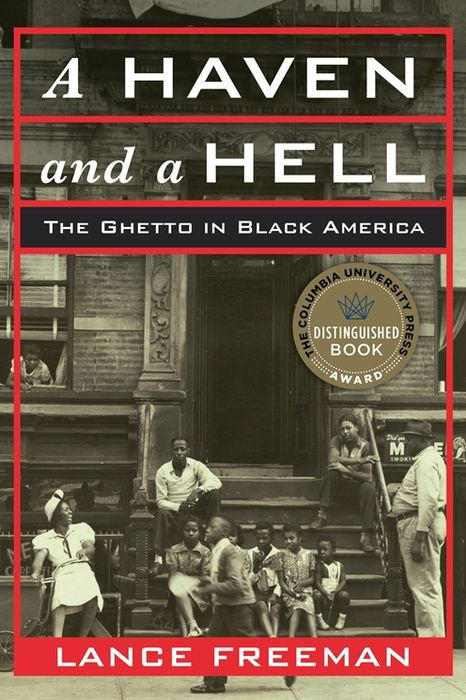Receive your first E-Book(s) on us valued up to $10, simply by registering an account today.
A Haven and a Hell: The Ghetto in Black America
$16.49 Original price was: $16.49.$12.99Current price is: $12.99.
The black ghetto is thought of as a place of urban decay and social disarray. Like the historical ghetto of Venice, it is perceived as a space of confinement, one imposed on black America by whites. It is the home of a marginalized underclass and a sign of the depth of American segregation. Yet while black urban neighborhoods have suffered from institutional racism and economic neglect, they have also been places of refuge and community.
In A Haven and a Hell, Lance Freeman examines how the ghetto shaped black America and how black America shaped the ghetto. Freeman traces the evolving role of predominantly black neighborhoods in northern cities from the late nineteenth century through the present day. At times, the ghetto promised the freedom to build black social institutions and political power. At others, it suppressed and further stigmatized African Americans. Freeman reveals the forces that caused the ghetto’s role as haven or hell to wax and wane, spanning the Great Migration, mid-century opportunities, the eruptions of the sixties, the challenges of the seventies and eighties, and present-day issues of mass incarceration, the subprime crisis, and gentrification. Offering timely planning and policy recommendations based in this history, A Haven and a Hell provides a powerful new understanding of urban black communities at a time when the future of many inner-city neighborhoods appears uncertain.
SKU
EBP_V6260815
Categories Social Science, Sociology, Urban
 Purchase this item and get 32 Points - a worth of $3.20
Purchase this item and get 32 Points - a worth of $3.20The black ghetto is thought of as a place of urban decay and social disarray. Like the historical ghetto of Venice, it is perceived as a space of confinement, one imposed on black America by whites. It is the home of a marginalized underclass and a sign of the depth of American segregation. Yet while black urban neighborhoods have suffered from institutional racism and economic neglect, they have also been places of refuge and community.
In A Haven and a Hell, Lance Freeman examines how the ghetto shaped black America and how black America shaped the ghetto. Freeman traces the evolving role of predominantly black neighborhoods in northern cities from the late nineteenth century through the present day. At times, the ghetto promised the freedom to build black social institutions and political power. At others, it suppressed and further stigmatized African Americans. Freeman reveals the forces that caused the ghetto’s role as haven or hell to wax and wane, spanning the Great Migration, mid-century opportunities, the eruptions of the sixties, the challenges of the seventies and eighties, and present-day issues of mass incarceration, the subprime crisis, and gentrification. Offering timely planning and policy recommendations based in this history, A Haven and a Hell provides a powerful new understanding of urban black communities at a time when the future of many inner-city neighborhoods appears uncertain.
| Book Author: | Lance Freeman |
|---|---|
| Language: | English |
| Pages: | 322 |
| Publisher: | Columbia University Press |
| Publication Date: | 2019 |
| ISBN-13: | 9780231545570 |
| Format: | iPhones/iPads/Mac (Apple Books), Androids/PCs (Google Play), Kobo, Nook, Kindle |
Only logged in customers who have purchased this product may leave a review.
Best seller of the week
-
The Paper Lion
$10.99Original price was: $10.99.$8.99Current price is: $8.99.Rated 0 out of 5Add to cart -
Put Me in the Zoo
$10.99Original price was: $10.99.$8.99Current price is: $8.99.Rated 0 out of 5Add to cart -
The Password to Larkspur Lane
$9.99Original price was: $9.99.$7.99Current price is: $7.99.Rated 0 out of 5Add to cart
















Reviews
There are no reviews yet.